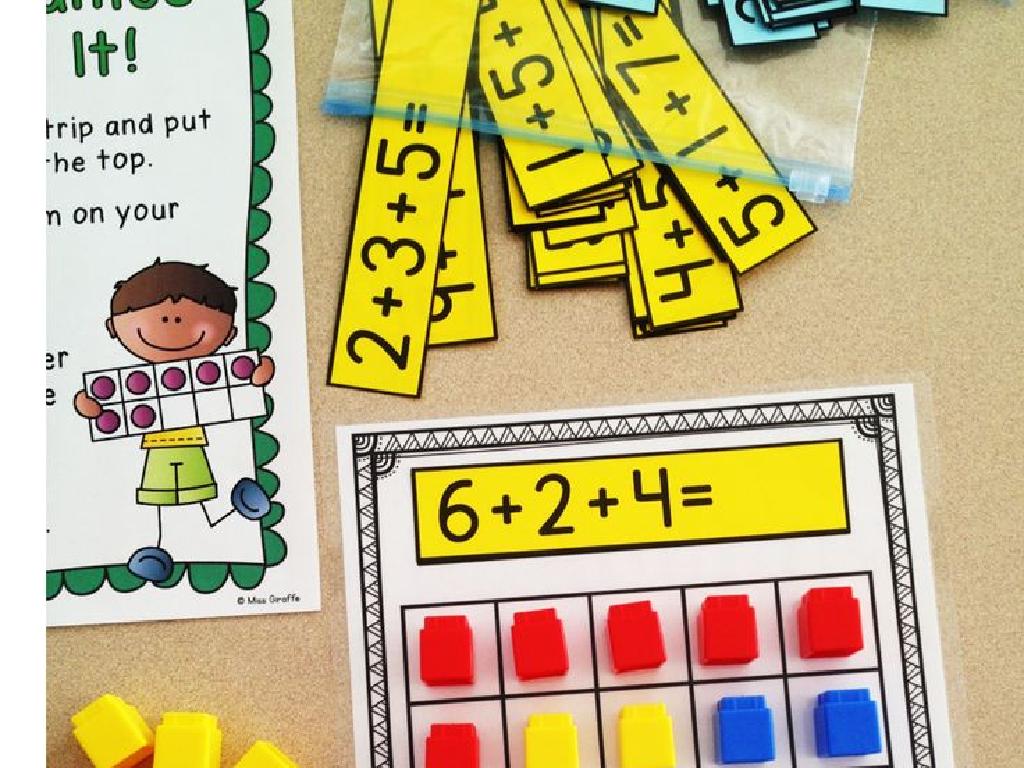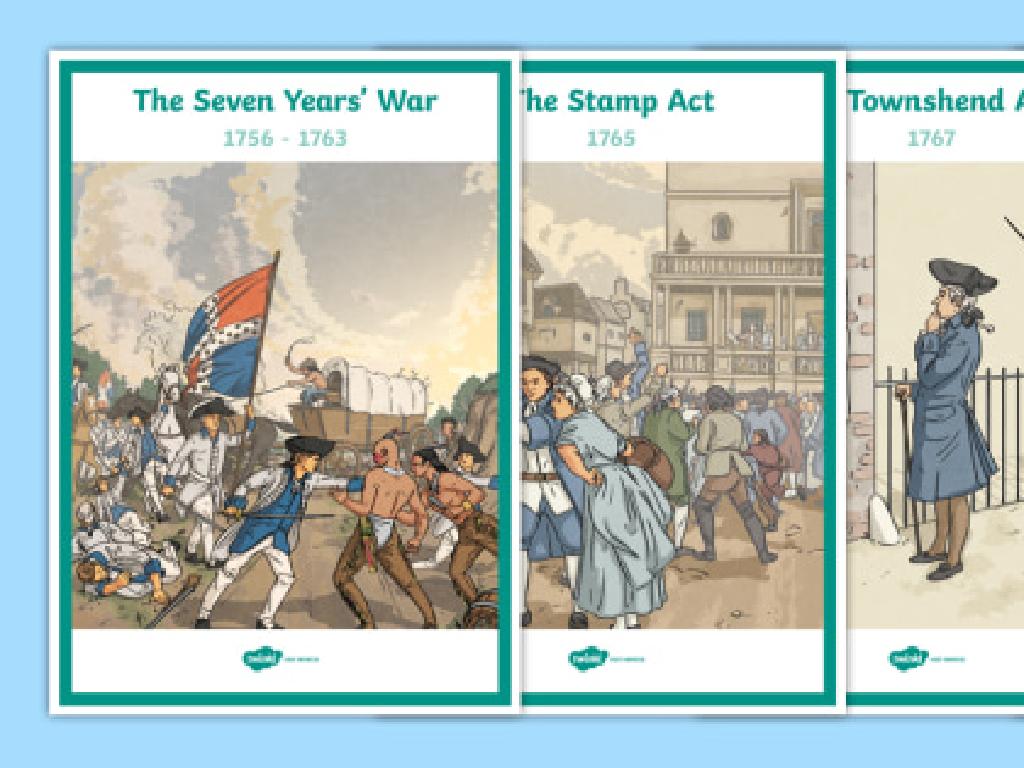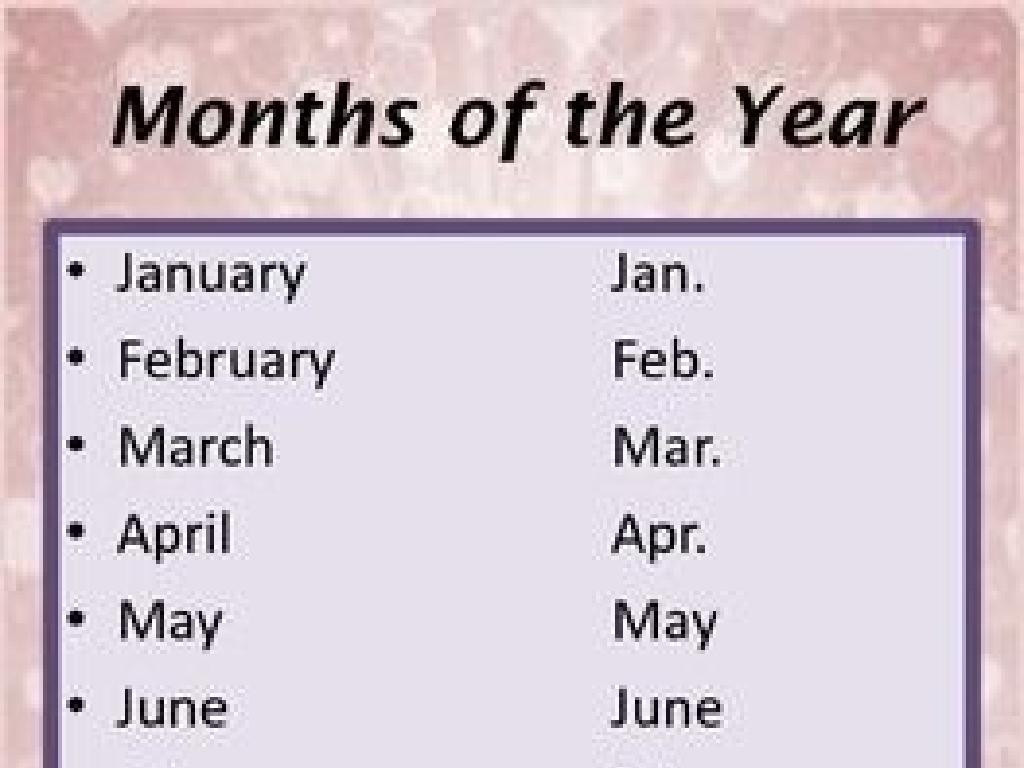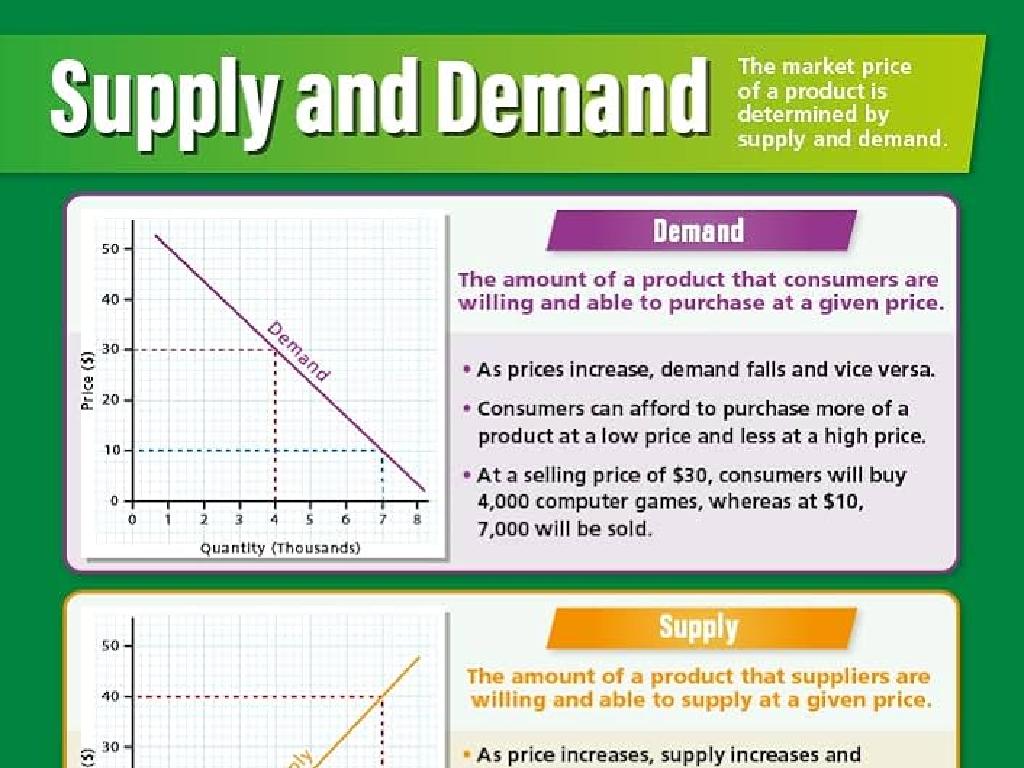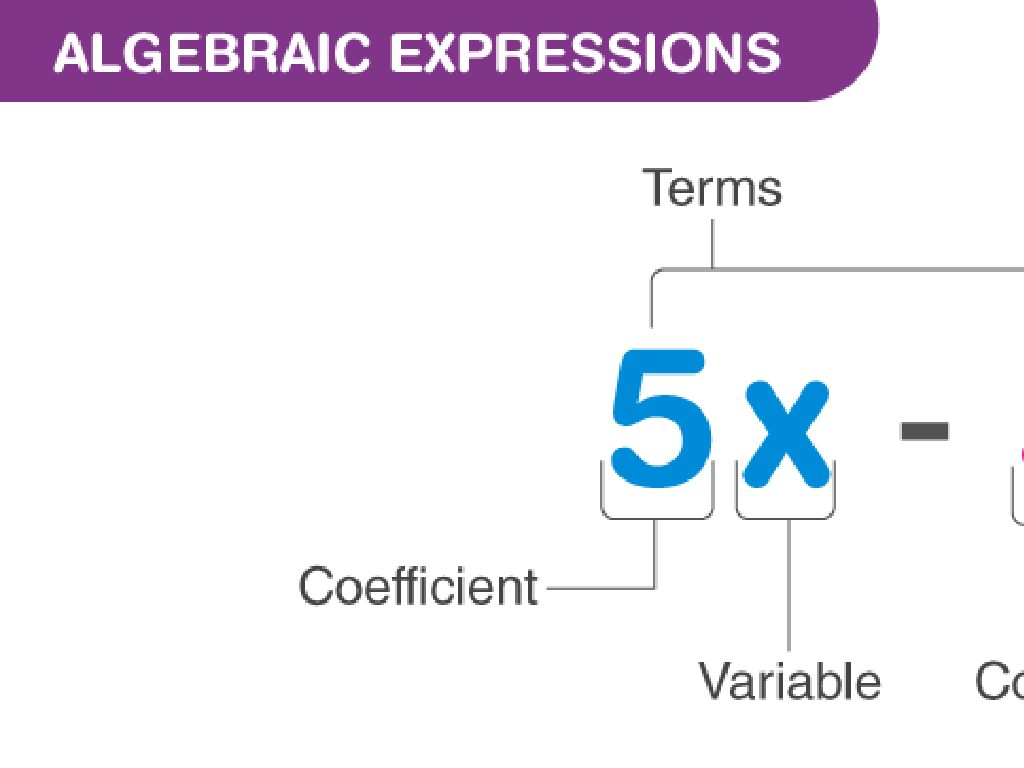What Does The Punctuation Suggest?
Subject: Language arts
Grade: Sixth grade
Topic: Punctuation
Please LOG IN to download the presentation. Access is available to registered users only.
View More Content
Exploring Punctuation in Language Arts
– The role of punctuation
– Punctuation guides readers on how to read text.
– Punctuation alters meaning
– Compare ‘Let’s eat, Grandma!’ vs ‘Let’s eat Grandma!’
– Decoding punctuation in sentences
– Use context to understand how commas, periods, etc., affect sentences.
– Today’s focus: Punctuation’s suggestions
|
This slide introduces the concept of punctuation and its significance in written language. Emphasize to students that punctuation is like the road signs for reading; it tells us when to pause, stop, or express excitement. Highlight how the absence or presence of punctuation marks like commas and periods can completely change the meaning of a sentence, sometimes leading to humorous misunderstandings. Use clear examples to illustrate this point. The lesson will delve into how students can use punctuation to infer the intended meaning of sentences and how they can apply this knowledge in their writing. Encourage students to think critically about the punctuation in sentences they encounter in their reading assignments.
Understanding the Period (.)
– The period ends a statement
– Use it to conclude declarative sentences.
– It signifies a full stop in thought
– Think of it as a stop sign when reading.
– Example: ‘She went to the store.’
– A simple sentence showing a completed action.
|
This slide introduces the period as a fundamental punctuation mark in written English. It’s crucial for students to recognize that a period represents the end of a declarative sentence, signaling a complete thought or statement. When they encounter a period while reading, they should pause as if coming to a stop sign. The example ‘She went to the store.’ illustrates a straightforward use of the period. Encourage students to practice writing sentences and to pay attention to where they place periods. Discuss how the period affects the pace of reading and the clarity of written communication.
Understanding the Question Mark (?)
– Indicates a question is asked
– Use at the end of a direct question
– Suggests uncertainty or curiosity
– It can express a speaker’s doubt or inquiry
– Example: ‘Are you going to the store?’
– Shows someone is asking about going to the store
|
The question mark is a fundamental punctuation mark in written English, used to indicate that a sentence is a direct question. It’s important for students to recognize not only the grammatical function but also the tone it conveys, such as uncertainty, curiosity, or even surprise. The example provided should help students see how a question mark changes a statement into a question. Encourage students to come up with their own examples of questions and discuss how the absence of a question mark can alter the meaning of a sentence.
The Role of the Exclamation Point (!)
– Exclamation points show strong emotion
– Use it to express surprise, alarm, or joy
– They can indicate shouting or excitement
– It’s like raising your voice in writing
– Example: ‘Watch out for that car!’
– An exclamation point can turn a simple sentence into a warning or an enthusiastic comment
|
The exclamation point is a punctuation mark that is used to express strong feelings or high volume when speaking. It’s important for students to understand that it should be used sparingly to maintain its impact. The example ‘Watch out for that car!’ illustrates how an exclamation point can convey urgency and volume, as if shouting a warning. Encourage students to think of other situations where an exclamation point might be appropriate and to share sentences they come up with. Discuss how the tone of a sentence changes with the addition of an exclamation point compared to a period.
The Role of Commas in Sentences
– Commas separate list items
– Like in ‘apples, oranges, bananas’
– They also separate clauses
– Phrases in a sentence are divided by commas for clarity
– Example: Listing fruits
In ‘I bought apples, oranges, and bananas’, commas make the list clear
– Understanding comma usage
|
This slide introduces the use of commas in writing. Commas play a crucial role in organizing lists and separating clauses within sentences, which helps clarify the meaning for the reader. The example provided shows how commas are used to list multiple items, making the sentence easy to read and understand. It’s important for students to recognize that without commas, the items in a list would be confusing. Encourage students to practice using commas in their writing by creating lists and separating clauses. This will help them become more proficient in their punctuation skills.
Understanding Quotation Marks
– Quotation marks enclose dialogue
– Used to show what someone is saying directly
– Indicate spoken or quoted words
– They signal that words are taken from another source or person
– Example: Direct speech in text
– ‘She said, “Meet me at the park.”‘ shows direct speech
|
This slide introduces students to the use of quotation marks in written English. Quotation marks are used to enclose words that are spoken or directly quoted from someone’s speech. It’s important for students to recognize that these punctuation marks indicate dialogue or direct speech within a text. The example provided should help students see how quotation marks are used in practice. Encourage students to look for quotation marks in their reading and to practice using them in their writing when including dialogue or quotes. Discuss how the punctuation changes the meaning and provides context to who is speaking in the sentence.
Exploring Apostrophes in Punctuation
– Apostrophes indicate possession
– Shows something belongs to someone, e.g., Sarah’s dog
– They also show contractions
– Combine words by omitting letters, e.g., ‘do not’ becomes ‘don’t’
– Example: ‘It’s John’s book’
– ‘It’s’ is short for ‘it is’ and ‘John’s’ shows the book belongs to John
|
This slide introduces the concept of apostrophes and their two main uses: showing possession and creating contractions. Possession indicates that something belongs to someone, such as in ‘Sarah’s dog,’ where the apostrophe and ‘s’ show that the dog belongs to Sarah. Contractions are formed when an apostrophe is used to replace missing letters in a word or phrase, making the speech or writing more concise. For example, ‘do not’ becomes ‘don’t.’ The example ‘It’s John’s book’ illustrates both uses: ‘It’s’ is a contraction for ‘it is,’ and ‘John’s’ indicates that the book belongs to John. Encourage students to find examples of apostrophes in their reading and to practice using them in their writing.
Punctuation in Action: Changing Meanings
– Punctuation alters meaning
– Compare sentences with different punctuation
– ‘Let’s eat, Grandma!’ vs ‘Let’s eat Grandma!’
– Discuss meaning changes with a partner
– How does the comma change the sentence’s meaning?
– Understand the importance of correct punctuation
|
This slide aims to highlight the significance of punctuation in sentence construction and meaning. By comparing two similar sentences with different punctuation, students will see how a simple comma can alter the meaning completely, changing a friendly invitation to a humorous misunderstanding. Encourage students to pair up and discuss how the meaning changes with and without the comma. This activity will help them understand the importance of using punctuation correctly to convey the intended message. It’s a fun and interactive way to reinforce the concept that punctuation is not just a set of arbitrary rules but a crucial tool for clear communication.
Class Activity: Punctuation Scavenger Hunt
– Find punctuation in your favorite book
– Write the sentence and its punctuation
– Explain what the punctuation suggests
– Does it show excitement, pause, or connection?
– Share your discoveries with the class
|
This activity is designed to help students recognize and understand the role of punctuation in text. Students will search for sentences in their favorite books that contain different punctuation marks. They should write down the sentences and note the specific punctuation used. Then, they will explain how the punctuation affects the meaning of the sentence, such as indicating a pause (comma), excitement or strong emotion (exclamation point), or a list (colon or semicolon). Afterward, students will have the opportunity to share their findings with the class, fostering a discussion about how punctuation shapes our reading and understanding of text. For the teacher: Prepare a list of punctuation marks for students to find, ensure they understand the task, and facilitate the sharing session to include insights on punctuation’s impact on reading comprehension.
Wrapping Up Punctuation!
– Recap punctuation meanings
– Homework: Craft a paragraph
– Include commas, periods, question marks, etc.
– Use all learned punctuation marks
– Punctuation brings sentences to life
– Think of punctuation as the sentence’s soul
|
As we conclude today’s lesson on punctuation, remind students of the various punctuation marks discussed and their functions in writing. For homework, students should write a creative paragraph that incorporates all the punctuation marks learned, such as commas, periods, exclamation points, and question marks. This exercise will help reinforce their understanding and provide practice in using punctuation effectively. Remember to emphasize that punctuation is crucial for clarity and expression in writing it’s what gives life to sentences. Encourage creativity and remind them that this is an opportunity to see how punctuation can change the tone and meaning of their writing.

